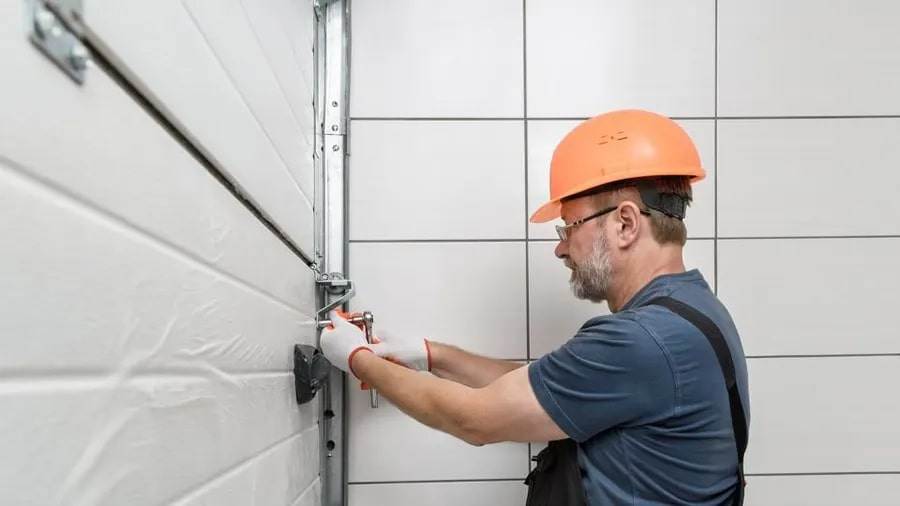Understanding the Difference Between Torsion and Extension Springs in 2024
The mechanics of springs play an important function in various applications, from on a regular basis home goods to complicated equipment. Understanding the variations between torsion and extension springs may help you choose the right type for your specific needs.
Garage Door Weatherproofing Solutions Edmonton
What Are Torsion Springs?
Torsion springs are designed to exert a torque or rotational force. They work by twisting, storing power in the coil because it turns round its axis. These springs are commonly utilized in applications requiring controlled rotational movements. For occasion, you can find torsion springs in gadgets like clothespins and garage doors, the place resistance to wind or gravity is needed.
- Mechanism: Torsion springs store vitality when they're twisted. The force exerted will increase because the spring is twisted further from its impartial position. Common Uses: Found in functions ranging from St. Albert's garage mechanisms to Spruce Grove’s industrial machines. Design Features: Typically, they consist of tightly wound coils around a stable heart. This building permits them to resist constant twisting forces.
What Are Extension Springs?
Broken Garage Door Solutions Beaumont
Extension springs, distinct from torsion springs, are designed to absorb and retailer power when they are stretched. These springs offer resistance to pulling forces and return to their authentic form when the force is removed. They are often found in purposes requiring pulling or tension, similar to within the doorways of sure appliances and different equipment.
- Mechanism: Extension springs function by elongating. The more they're stretched, the more force is exerted to return to their authentic shape. Common Uses: Often used in Beaumont's automotive business or in tools found in Fort Saskatchewan developments. Design Features: Typically have coils with hooks or loops at every end for safe attachment factors.
Key Differences Between Torsion and Extension Springs
Quick and Reliable Garage Door Repair Morinville
Understanding the distinct traits of these two kinds of springs can help you discern which one fits your software. Here are the first variations:
- Type of Force: Torsion springs generate a torque from rotational movement, while extension springs generate force when pulled aside. Shape and Design: Torsion springs are wound around a center axis, whereas extension springs are cylindrical and have hooks or loops at both ends. Applications: Torsion springs are good for functions needing to resist rotational forces, similar to in Leduc’s home items, while extension springs excel in scenarios requiring tension, like in Spruce Grove's automotive components.
Garage Door Safety Sensor Adjustments Beaumont
Applications and Uses in Local Industries
Both torsion and extension springs find in depth use across totally different industries, including manufacturing, automotive, and residential functions - Fort Saskatchewan’s http://elliotiuux667.lowescouponn.com/professional-overhead-door-repairs-edmonton Trusted Garage Door Specialists. Here’s how these springs are utilized in some localities:
Torsion Springs
- **Sherwood Park**: Often utilized in door hinge assemblies, allowing for easy operations. - **Devon**: Integral in sports activities gear, corresponding to resistance bands and weights.Extension Springs
- **Morinville**: Common in garage doors, offering the necessary tension for lifting doorways efficiently. - **Ardrossan**: Frequently present in furniture mechanisms, guaranteeing clean functioning of recliners and sofas.Garage Door Safety Sensor Adjustments Fort Saskatchewan
Each of these springs serves a particular purpose to boost product functionality and efficiency - Nisku Garage Door System Maintenance. Understanding their roles helps manufacturers design better merchandise tailored to meet client wants
Choosing the Right Spring for Your Application
When deciding between torsion and extension springs, contemplate the specific mechanical requirements of your application. Here are some tips to guide your selection course of:
Quality Garage Door Cable Repairs Leduc
- Identify the Forces Involved: Determine whether or not you want resistance to twisting (torsion) or pulling (extension). Evaluate Space Constraints: Analyze the working surroundings, as house might determine the form and size of the spring you need. Material Considerations: Choose the best material based mostly on corrosion resistance and strength, which may be important in areas like Fort Saskatchewan's industrial sectors.
Conclusion
Fast Response Garage Door Repair Spruce Grove
In summary, the difference between torsion and extension springs lies of their basic operations and purposes. Torsion springs excel in providing rotational resistance, making them excellent for functions that require torque, whereas extension springs are excellent for purposes that necessitate tension and pulling. Whether you are in Stony Plain, Leduc, or some other locale, understanding these differences will empower you to make knowledgeable decisions for your spring necessities. Don’t hesitate to consult with business professionals to ensure one of the best fit on your particular needs!
